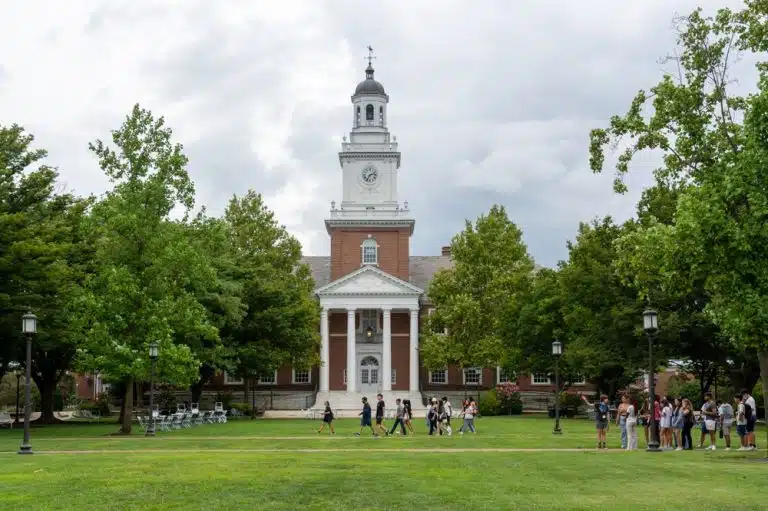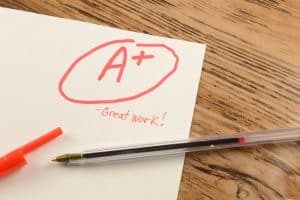Getting placed on a college waitlist can be a confusing and anxious time for many students. Specifically, for those aiming for admission to prestigious institutions like Johns Hopkins University, this time can be fraught with uncertainty. This article aims to reduce that confusion by offering a comprehensive overview of the Johns Hopkins waitlist process, offering advice on navigating the waitlist, considering alternatives, and preparing for possible admission.
Understanding the Waitlist Process
When it comes to college admissions, the waitlist process is a common practice used by universities, including Johns Hopkins. This system allows institutions to manage admissions when they cannot offer immediate acceptance to qualified students due to limited available slots.
However, it’s important to note that being placed on the waitlist does not guarantee admission. Instead, it keeps the possibility of acceptance open until the summer before the academic year begins. The number of students invited from the waitlist can vary each year, depending on factors such as the number of accepted students who choose to enroll.
The Basics of College Waitlists
When you find yourself on a college waitlist, it can be a mix of hope and uncertainty. You may wonder what your chances are and how the process works. At Johns Hopkins, the waitlist process operates similarly to many prestigious universities.
If you are placed on the waitlist, your application remains active, and you have the opportunity to be called up for admission if space becomes available. This means that even though you were not initially offered a spot, there is still a chance for you to join the incoming class.
How the Johns Hopkins Waitlist Works
Once you receive the news that you have been placed on the waitlist at Johns Hopkins, you face a decision. Registration on the Johns Hopkins waitlist is not automatic; instead, you will be given the choice to accept or decline your spot. This decision can be a difficult one, as it involves weighing your options and considering other potential college offers.
Admitted students should confirm their acceptance by May 1. If there are remaining openings in the class, the admissions committee will turn to the waitlist to admit additional students if space permits.
To stay on the Johns Hopkins University waitlist, you only need to complete the Waitlist Reply Form on your applicant portal by the given deadline. No additional materials are required, but updates to your application are welcome. If you decide to submit updates, please ensure they provide new, substantial information.
This process aims to help applicants better understand their continued interest in Johns Hopkins and any recent achievements that can strengthen their application should it be revisited for admission.
It’s important to keep in mind that the waitlist process is not a guarantee of admission. While some students may receive an offer, others may not. The university carefully considers various factors, including the number of students who decline their initial acceptance, to determine how many students to admit from the waitlist.
During this time, it’s also essential to continue focusing on your academic and extracurricular pursuits. Maintaining strong grades, participating in meaningful activities, and showcasing your continued interest in Johns Hopkins can all positively impact your chances of being admitted from the waitlist.
Remember, being on the waitlist means the admissions committee sees potential in your application. They believe you would be a valuable addition to their student body. So, while the waitlist may bring uncertainty, it also presents an opportunity to demonstrate your commitment and enthusiasm for attending Johns Hopkins.
Factors Influencing the Johns Hopkins Waitlist
Admission Statistics and Trends
When considering your position on the Johns Hopkins waitlist, looking at past admission statistics and trends can provide some insights. For instance, the percentage of students admitted from the waitlist fluctuates each year, depending on factors like the yield rate of accepted students, i.e., the number of students who decide to enroll after being accepted.
In previous years, Johns Hopkins has offered admission to a varying number of waitlisted students. Therefore, it’s important to remember that past trends are not surefire indicators of future outcomes. Nonetheless, they can offer a rough idea of what to expect.
For example, in the 2021 admissions cycle, Johns Hopkins admitted only two students from the waitlist out of 2,611 students who accepted a place on the Johns Hopkins waitlist. In the Fall 2022 admissions cycle, Johns Hopkins placed 3,443 students on the waitlist, and 2,358 students accepted their spots on the waiting list.
However, for the 2022-2023 academic year, according to JHU’s 2022-2023 Common Data Set, no students were admitted from the Johns Hopkins waitlist.
Another factor to consider is the overall competitiveness of the applicant pool. If the applicant pool is exceptionally strong in a given year, the number of students admitted from the waitlist may decrease. Conversely, if the applicant pool is weaker, the waitlist movement may be more favorable.
Impact of Early Decision Applicants
The impact of Early Decision (ED) applicants on the waitlist cannot be overlooked. Johns Hopkins’ ED program allows students to apply and receive a decision before the regular decision timeline. This commitment is binding, meaning that ED-accepted students are required to enroll.
Given the binding nature of this program, it plays a significant role in shaping the waitlist. A significant portion of the incoming class is often filled through the ED application process, leaving fewer places for regular decision applicants and thus influencing the waitlist size and movement.
It’s important to note that the ED program at Johns Hopkins is highly competitive, with a lower acceptance rate compared to the regular decision pool. This means that a substantial number of highly qualified applicants are already admitted through the ED process, further reducing the number of spots available for waitlisted students.
However, it’s also worth mentioning that the ED program can have a positive impact on the waitlist movement. If a significant number of ED-accepted students decline their offers or choose to enroll elsewhere, it may create more opportunities for waitlisted students to be admitted.
Ultimately, the interplay between the ED program and the waitlist is complex and can vary from year to year. It’s crucial to stay informed about the specific circumstances of the admissions cycle and not solely rely on general assumptions.
Navigating the Waitlist
Being placed on a waitlist can be a disheartening experience. After all the hard work and anticipation, it’s natural to feel a certain level of disappointment. However, it’s essential not to lose hope but instead, strategize and take actionable steps to increase your chances of getting off the waitlist.
First and foremost, it’s crucial to indicate your continued interest in the university. If you receive a waitlist offer, promptly accept your place on the waitlist as per the university’s instructions.
This shows the admissions committee that you are still interested in attending their institution and are willing to wait for a potential spot to open up.
While waiting for a decision, it is advisable to review your financial aid situation. Since it can sometimes be late in the process when waitlisted students are admitted, there can be concerns regarding the availability and allocation of financial aid.
Reach out to the university’s financial aid office to ensure you understand all potential financial implications well ahead of time. This will help you avoid any surprises if you are eventually offered admission.
Communicating with the Admissions Office
Maintaining a polite and respectful communication line with the admissions office is crucial while you’re on the waitlist. Although you may feel anxious and eager for an update, it’s important to remember that the admissions office is dealing with a large number of applicants. Be patient and understanding as they work through the process.
If you have any significant accomplishments or changes that could positively impact your application, it’s appropriate to update the admissions office.
Students on the Johns Hopkins waitlist may provide additional information to assist the admissions committee if they decide to review candidates for admission. Here are some suggestions for updating your application:
- Letter of Interest: Write a one-page letter to the admissions committee explaining why you remain interested in Hopkins and why you believe it’s the right school for you.
- Updated Resume: Share details about your senior-year activities that weren’t included in your original application.
- Updated Transcript: Provide your most recent grades, including those beyond the mid-year report, if available. Request your guidance counselor to submit them. A final transcript is required if you’re admitted from the waitlist.
Johns Hopkins does not encourage students to submit additional letters of recommendation, writing samples, research or term papers, or supplementary materials such as CDs, slides, or portfolios.
When sending updates, make sure to direct them to your regional admissions representative. Include your full name, birth date, and school name, and mention that the materials are for a waitlist update.
However, it’s important to strike a delicate balance when communicating with the admissions office. While it’s crucial to demonstrate your continued interest in attending the university, excessive communication might be perceived negatively. Avoid bombarding the admissions office with constant emails or phone calls. Instead, choose your updates wisely and ensure they are meaningful and significant.
Being on the waitlist doesn’t mean it’s the end of the road. Many students have successfully been admitted off the waitlist and gone on to have successful college experiences.
Stay positive, continue to work hard, and explore other options while you wait for a final decision. You never know what opportunities may arise, and sometimes, the unexpected path leads to the most rewarding experiences.
Alternatives to Consider
Exploring Other College Acceptances
While on the waitlist, it’s important not to put all your academic plans on hold. If you’ve received acceptances from other colleges, give them serious consideration.
Assess the various aspects of these schools, including their academic programs, campus life, financial aid packages, and location. Decide if any of these could serve as a good fit for your educational goals.
When exploring other college acceptances, it’s essential to delve into the academic programs offered. Look for majors and courses that align with your interests and career aspirations. Consider the faculty’s expertise and research opportunities available. Research the curriculum structure and flexibility to ensure it meets your academic needs.
Alongside academics, campus life plays a significant role in your overall college experience. Investigate the extracurricular activities, clubs, and organizations offered at each college. Determine if they align with your interests and provide opportunities for personal growth and leadership development.
Additionally, consider the campus facilities, such as libraries, laboratories, and recreational spaces, as they contribute to your learning and well-being.
Financial aid packages are another crucial aspect to consider. Compare the scholarships, grants, and loans offered by each college. Evaluate the affordability of tuition and fees, as well as the cost of living in the surrounding area. Take into account the potential for internships, work-study programs, and other financial opportunities that can help offset expenses.
Lastly, consider the location of each college. Reflect on your preferences for urban, suburban, or rural environments. Think about the climate, proximity to home, and access to cultural and recreational activities. Remember that the location can greatly impact your overall college experience and personal growth.
Considering a Gap Year or Transfer Options
If you’re set on joining Johns Hopkins, but the waitlist is your current reality, you might consider options like taking a gap year or planning to transfer.
A gap year can provide an excellent opportunity to gain real-world experience and further develop your personal and academic interests. However, it’s crucial to keep in mind that even with these plans, admission to Johns Hopkins as a freshman or transfer student is never guaranteed.
During a gap year, you can explore various avenues for personal and academic growth. Consider internships, volunteer work, or research opportunities that align with your interests. Use this time to gain practical experience and develop skills that will enhance your college application.
Additionally, consider traveling or participating in cultural exchange programs to broaden your horizons and gain a global perspective.
If you decide to explore transfer options, research the transfer admission requirements and deadlines for Johns Hopkins and other colleges you’re interested in.
Understand that the transfer process can be competitive, as reflected in the Johns Hopkins transfer acceptance rate. It is essential to maintain a strong academic record during your current college experience. Take advantage of resources like transfer advisors and college fairs to gather information and make informed decisions.
While considering a gap year or transfer options, it’s important to have a backup plan in case admission to Johns Hopkins doesn’t materialize. Explore other colleges or universities that align with your academic and personal goals. Keep an open mind and remember that success can be achieved in various educational settings.
Preparing for Possible Admission
For students finding themselves on the Johns Hopkins waitlist, preparing for possible admission is a critical step in their journey. Your dedication during this period can be a key factor in your path to joining the Johns Hopkins community.
This guide offers insights into maintaining academic excellence, staying active in extracurricular activities, and strategically positioning yourself to enhance your chances of securing a spot at this prestigious institution.
Academic Excellence and Continuity
To prepare for potential admission from the Johns Hopkins waitlist, a comprehensive strategy is essential. First and foremost, maintaining a strong academic performance is not merely advisable but imperative.
The university closely monitors your final high school grades, particularly any significant changes, as these can significantly influence the admissions decision.
Consistency is key to demonstrating your unwavering commitment to learning and striving for academic excellence. This should encompass pursuing challenging coursework, engaging in additional academic opportunities, and excelling in your studies. It’s essential to promptly update the university about any noteworthy academic achievements, such as top standardized test scores or academic awards.
Maximizing Your Extracurricular Engagement
Equally vital is maximizing your involvement in extracurricular activities. Your extracurricular engagements provide valuable insights into your multifaceted interests and personal growth. Diversity in your pursuits showcases your adaptable and multifaceted personality.
Seek leadership roles within your extracurricular activities, as they exemplify your capacity to make a meaningful impact. Don’t forget to share any awards or recognition you receive for your involvement. Demonstrating long-term dedication to your extracurricular activities underscores your commitment and passion.
Demonstrating Resilience and Growth
During your time on the waitlist, it’s an opportunity to demonstrate resilience, adaptability, and personal growth. Embrace and overcome challenges with a positive attitude, and consider acquiring new skills or deepening your existing ones, which can involve independent research, advanced coursework, or relevant internships.
Strategic Communication
When updating the university about your achievements, maintain a strategic approach. Quality should prevail over quantity, meaning your updates should be significant and directly relevant to your application. Avoid inundating the admissions office with minor updates.
Preparing for Possible Interviews
Additionally, be prepared for possible interviews, as not all waitlisted candidates are interviewed. Practice your interview skills and ensure you can discuss your continued interest in Johns Hopkins and any developments since you initially applied.
Emphasizing Continued Interest
Lastly, throughout your communications, emphasize your sincere and unwavering interest in Johns Hopkins. Articulate why the university aligns with your academic and personal goals and how you can contribute to their academic and social community.
By adhering to these strategies, you can leverage your time on the waitlist as an opportunity to strengthen your application, showcasing to the admissions committee your proactive, dedicated, and adaptable nature. Johns Hopkins highly values students who demonstrate ongoing commitment, resilience, and the ability to excel in a challenging academic environment.
Being on the waitlist is undoubtedly a daunting situation. By grasping the Johns Hopkins waitlist process, being proactive, and planning ahead, you can navigate this challenging situation and prepare for the future.
Regardless of the outcome, remember that your worth is not defined by college admissions, and endless opportunities await you.
AdmissionSight is a valuable resource for students navigating the waitlist process and seeking to enhance their college applications. With expert guidance and personalized support, AdmissionSight offers strategic insights on communicating effectively with universities, bolstering academic and extracurricular profiles, and preparing for potential interviews.
Our dedicated team assists students in maximizing their chances of securing a spot at their dream institutions, making the complex waitlist journey more manageable and fruitful.






